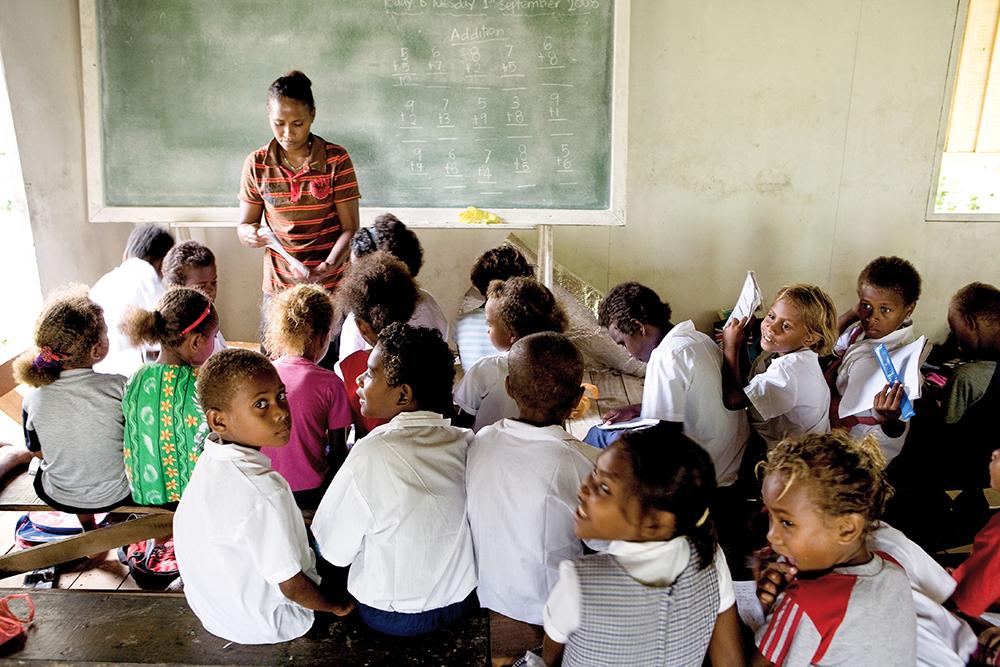Photo: Chris Palethorne
Salimoana is an 11-year-old girl who loves to read. Her cousin Aisea, nine, hates reading but has a knack for numbers. Games bring Aisea to life and he is often persuading his bookworm cousin to join. Although Sali and Aisea may have different interests, they are at a delicate stage in their lives and need to have the opportunity to harness their individual developing minds through quality education.
Education is a fundamental human right, as stated under Article 26 of the Universal Declaration of Human Rights (UDHR). This forms the foundation of UN Sustainable Development Goal (SDG) 4 – Ensure inclusive and quality education for all and promote lifelong learning.
But how do you ensure that Sali and Aisea receive the same quality of education as Sione from Samoa, Anote from Nauru or Heidi in Germany? These questions were left unanswered due to a lack of data in the Pacific – a gap that was finally addressed through the Pacific Island Literacy and Numeracy Assessments (PILNA) conducted by the Pacific Community’s Educational Quality and Assessment Programme (EQAP) in 2012 and 2015.
The Pacific Community (SPC), through EQAP, is mandated to assist Pacific Island countries and territories to improve the quality of Pacific students’ educational achievement by supporting curriculum development, the development of teacher and school leadership standards and frameworks, educational assessments, and policies.
PILNA assessed the reading, writing and numeracy skills of Year 4 and Year 6 students. It assessed what they know, how much they know and how much their environments affect their performance.
‘PILNA is designed to enable a coordinated regional effort to improve outcomes in literacy and numeracy in the Pacific while at the same time gather evidence for sound decisionmaking and policy development’, said EQAP Director, Dr Michelle Belisle.
In the final quarter of 2015, approximately 50,000 students across 13 Pacific Islands participated in the research.
‘The 2015 PILNA report showed notable improvement in numeracy achievement across the region for students in Year 4 to Year 6. A resounding 74 per cent of Year 4 students were at or above the expected proficiency level in 2012, and this further increased to 86 per cent in 2015’, added Dr Belisle.
Similarly, the portion of Year 6 students at or above the expected level increased from a little over 56 per cent in 2012 to almost 68 per cent in 2015.
It was also noteworthy that girls demonstrated higher levels of performance in numeracy and literacy than boys across the region in 2015. SPC has been actively urging educational stakeholders to review PILNA evidence and trends between 2012 and 2015, both regionally and nationally, and to consider intervention strategies for students performing at the lower end of the proficiency scale, particularly in literacy.
The 2015 PILNA data points to why improving learning outcomes – in particular, building basic literacy and numeracy skills – must remain a common goal shared by all Pacific Island countries and territories, particularly ministers and ministries of education, as well as development partners.
’Knowing where our little ones stand will only help us improve literacy and numeracy in the region’, said Dr Belisle.
SPC, through EQAP, will undertake another PILNA survey in 2018, covering 15 Pacific countries.
FACT BOX
- In 2015, more than 45,000 Year 4 and Year 6 students from around 700 schools across 13 countries took part in PILNA, making it the largest ever assessment in the Pacific.
- SPC carries out the assessment in the form of two tests and a questionnaire.
- The assessment is a culmination of a twoyear-long preparation.
- Currently, the assessment is a collaboration between SPC and 15 Pacific countries.
- Preparation includes workshops with literacy and numeracy experts from the countries that put the tests and the questionnaire together, ensuring that the topics tested are already familiar to the children within the countries. The test is first trialled with select countries and schools before its actual cycle.
- Schools are given a two-week window to conduct these hour-long tests, with one test taking place each day.
